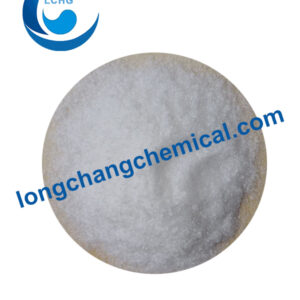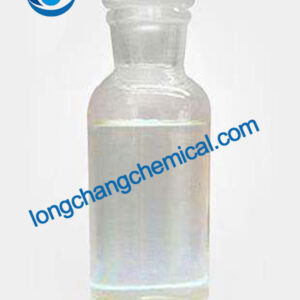描述
辛基巯基锡-Otm CAS 26401-97-8
| 项目 | 规格 |
| 外观 | 无色至黄色透明液体 |
| 锡含量(%) | 15.5 ± 1 |
| 比重@25 | 1.125 ±0.05 |
| 折射率@25 | 1.5000@ ± 0.05 |
| 色度(铂-钴) | ≤200 |
OTM 使用情况
1.催化剂:Otm 可作为有机锡催化剂用于酯化、环化和缩合等有机合成反应。
2.防腐剂:Otm 可用作金属防腐涂层的添加剂,以提高其耐腐蚀性。
3.塑料添加剂:Otm 可用作塑料添加剂,以提高聚合物的耐热性和耐光性。
4. 润滑剂:Otm 还可用作润滑剂,为材料表面提供润滑性能。
5.流动性好,热稳定性强。适用于 PVC 食品包装硬质薄膜和片材的压延、挤出和注塑成型。它是 PVC 的热稳定剂之一。
OTM 套餐
200 公斤钢制塑料桶或 IBC 罐
OTM 存储
存放在阴凉、干燥和通风处,保持容器密封。远离火源、热源。防止入口或入眼,溅到皮肤上应及时用肥皂清洗。防止吸入蒸汽和烟雾。贮存期 24 个月。
立即联系我们!
如果您需要价格,请在下表中填写您的联系信息,我们通常会在 24 小时内与您联系。您也可以给我发电子邮件 info@longchangchemical.com 请在工作时间(UTC+8 周一至周六,上午 8:30 至下午 6:00)或使用网站即时聊天工具获得及时回复。
| 无水氯化亚锡 | 7772-99-8 |
| 二甲基二氯化锡 | 753-73-1 |
| 单丁基氧化锡 | 2273-43-0 |
| 二丁基氧化锡 | 818-08-6 |
| 三丁基氧化锡 | 56-35-9 |
| 四丁基锡 | 1461-25-2 |
| 丁基硫醇锡 | 26410-42-4 |
| 二乙酸二丁基锡 | 1067-33-0 |
| 二月桂酸二丁基锡 | 77-58-7 |
| 马来酸二丁基锡 | 78-04-2 |
| 单丁基三氯化锡 | 1118-46-3 |
| 二丁基二氯化锡 | 683-18-1 |
| 三丁基氯化锡 | 1461-22-9 |
| 丁基锡三(2-乙基己酸酯) | 23850-94-4 |
| 二正辛基氧化锡 | 870-08-6 |
| 二甲基二烷基甜菜碱 | 68928-76-7 |
| 辛基硫醇锡 | 26401-97-8 |
聚氯乙烯热稳定剂的作用机理
1) 吸收和中和 HCL,抑制其自催化作用。这类稳定剂包括铅盐、有机酸金属皂、有机锡化合物、环氧化合物、苯酚盐和金属硫醇盐。它们会与 HCL 发生反应,抑制 PVC 与 HCL 的反应。
2)置换 PVC 分子中不稳定的烯丙基氯原子以抑制 PVC 的脱除,如有机锡稳定剂与 PVC 分子中不稳定的氯原子发生配位键,在配体中,有机锡与不稳定的氯原子被置换。
3)与多烯结构发生加成反应,破坏大共轭体系的形成,降低着色性。不饱和酸盐或酯类含有双键,PVC 分子中的共轭双键会发生双烯加成反应,从而破坏其共轭结构,抑制颜色变化。
4)捕捉自由基,防止氧化反应。如添加酚类热稳定剂可阻断 HCL,是由于酚类赋予 H 原子自由基可与 PVC 大分子自由基降解耦合,形成不能与 O2 反应的物质,而具有热稳定作用。这种热稳定剂可以有一种或几种功能。
理想的 PVC 热稳定剂应该是一种多功能材料,或者是一些材料的混合物,它们可以实现以下功能:第一,取代活性、不稳定的取代基;第二,吸收和中和PVC加工过程中释放的HCL,消除HCL的自催化降解作用;第三,中和或钝化对降解有催化作用的金属离子和其他有害杂质;第四,通过多种形式的化学反应,可以阻断不饱和键的继续增长,抑制着色降解;第五,最好对紫外线有保护屏蔽作用。通常热稳定剂根据其特殊性能单独使用的情况很少,而且大多数品种为粉末状,有些是毒性很大的化学物质。为了使用方便,防止粉尘中毒,减少有毒物质或用无毒物质代替,近年来国内外开发了许多种复合稳定剂,例如世界著名的德国熊牌复合稳定剂系列,美国、德国、日本、荷兰等国的有机锡或复合有机锡稳定剂,在我国都有相当大的市场。因此,在我国推广应用具有高效、低成本、无粉尘污染和无毒或低毒的新型复合稳定剂,是我国塑料工业发展的迫切需要。





